This post may contain affiliate links. See my disclosure policy.
This Pork Schnitzel recipe is an easy and delicious weeknight dinner made of boneless pork chops that have been pounded flat, then breaded and fried until golden and crispy. Popular throughout Europe, particularly in Austria and Germany, it’s the perfect versatile comfort food loved by all ages.
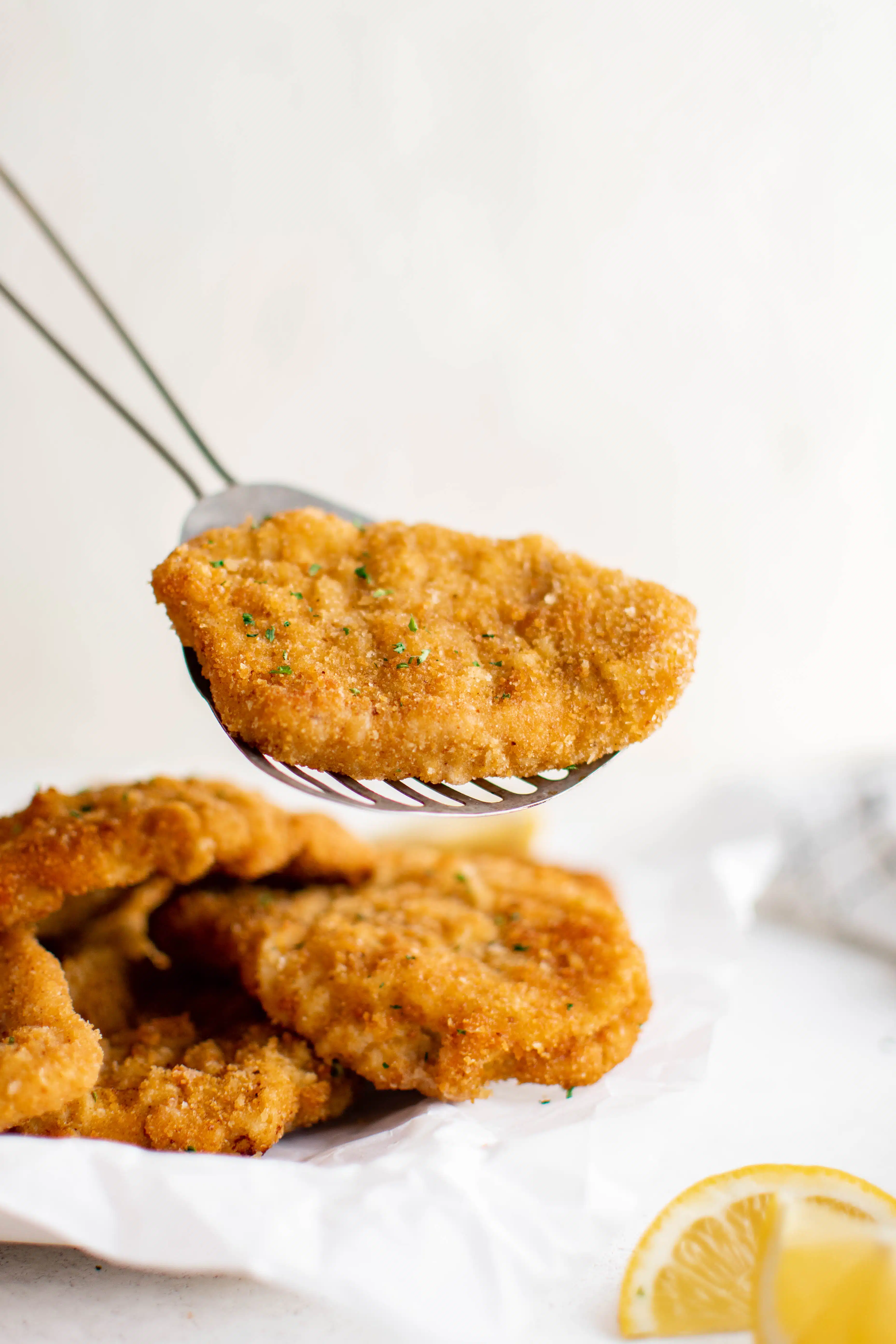
Table of Contents
What is Schnitzel?
Ah, schnitzel. So crispy, crunchy, and beautifully golden. Perfectly fried with a juicy, tender center. I mean, everyone loves schnitzel. I certainly do!
Before living in Germany in 2012, I had no idea what schnitzel actually was, aside from the American fast food chain Wienerschnitzel (which is something completely different). I soon discovered that authentic schnitzel is made from thin slices of meat that are tenderized and pounded even thinner with a meat mallet or rolling pin. The cutlets are then coated in flour, dipped in egg, and finished with breadcrumbs before being fried until golden and crisp.
Recipe Highlights
- Total Time: About 50 minutes (15 minutes prep + 35 minutes cook)
- Servings: Makes 5 portions
- Special Diets: None as written; but can be made gluten-free using gluten free flour and breadcrumbs
- Best For: Busy weeknight meals, Oktoberfest celebrations, or family gatherings
- Customizable: Swap pork for chicken, veal, or turkey to create other schnitzel variations
- Make-Ahead: Bread the cutlets a few hours in advance and refrigerate until ready to fry; reheat leftovers in oven or air fryer to keep them crisp.
- Perfect Pairings: Serve with lemon wedges, parsley, German potato salad, spätzle, or smothered in a delicious mushroom sauce like this jägerschnitzel recipe.
Ingredients For Schnitzel
Here’s what you’ll need to make pork schnitzel at home:

- Pork Chops: Boneless pork chops are traditional for German schnitzel, pounded to ¼ inch for tenderness. Substitute with chicken breasts (Hähnchen-Schnitzel), veal cutlets (Wiener Schnitzel), or turkey breast (Putenschnitzel).
- All-Purpose Flour: The first dredging layer that helps the egg and breadcrumbs stick. Substitute with gluten free flour blends or rice flour for a light, crisp finish.
- Seasoning: A simple mix of salt, pepper, garlic powder, and onion powder enhances flavor. Add paprika for smokiness, cayenne for heat, or dried herbs like oregano or parsley for variety.
- Eggs: Beaten eggs bind the breadcrumbs to the meat.
- Breadcrumbs: Plain breadcrumbs create the classic crispy crust. Substitute with panko for extra crunch, gluten free breadcrumbs, crushed saltines, or matzo meal.
- Vegetable Oil: A neutral oil with a high smoke point like canola or sunflower is ideal for frying. You can also use avocado oil, peanut oil, clarified butter, or even traditional lard.
- Fresh Lemons: A must for serving!
Step-By-Step Instructions
Step 1. Heat the oil
Pour about 1 to 2 inches of vegetable oil into a large skillet or deep frying pan. Warm over medium-high heat until it reaches 350°F (175°C). A kitchen thermometer ensures accuracy.
Step 2. Flatten the pork
Place each boneless pork chop between sheets of plastic wrap. Use a meat mallet or rolling pin to pound them to ¼-inch thickness (image 1). Consistency in thickness helps them cook evenly.

Step 3. Prepare the dredging stations
- Bowl 1: Mix the flour with salt, black pepper, garlic powder, and onion powder.
- Bowl 2: Beat eggs with a splash of water until smooth.
- Bowl 3: Add the plain breadcrumbs.
Step 4. Dredge the cutlets, one by one
- Coat the pork in the flour mixture, shaking off excess (image 2)
- Dip into the egg wash (image 3)
- Press the meat into the breadcrumbs until completely covered (image 4)



Step 5. Fry until golden
Gently lower 2 to 3 cutlets into the hot oil, being careful not to crowd them. Cook for 4 to 5 minutes, flipping halfway, until golden brown (image 5) and an instant-read thermometer shows 145°F (63°C).

Step 6. Drain and rest
Transfer the schnitzels to a paper towel-lined plate to remove excess oil. Keep warm while frying the remaining cutlets.
Step 7. Serve
Enjoy immediately with lemon wedges, fresh parsley, and your favorite sides.

Tips for the Best Pork Schnitzel
- Pound thin for authenticity: Flatten pork chops to about ¼ inch. This is what gives schnitzel its signature texture and sets it apart from a basic breaded cutlet.
- Fry right after breading: Cook schnitzel immediately once coated. Allowing it to sit in breadcrumbs makes the crust less crispy.
- Serve immediately: Schnitzel is at its very best fresh from the pan when the crust is crisp and the inside juicy.
- Learn deep frying basics: If you’re new to frying, check out Deep Frying 101: How to Successfully Deep Fry Anything, where I share all my tips.
Serving Ideas
Schnitzel is traditionally served with lemon slices or lemon wedges and fresh parsley. Potatoes in one form or another are often served on the side. Popular examples include German potato salad, creamy mashed potatoes, and French fries (aka Pommes). I like to serve it with a light cucumber salad or sliced into strips over this farro salad recipe with arugula and Parmesan.
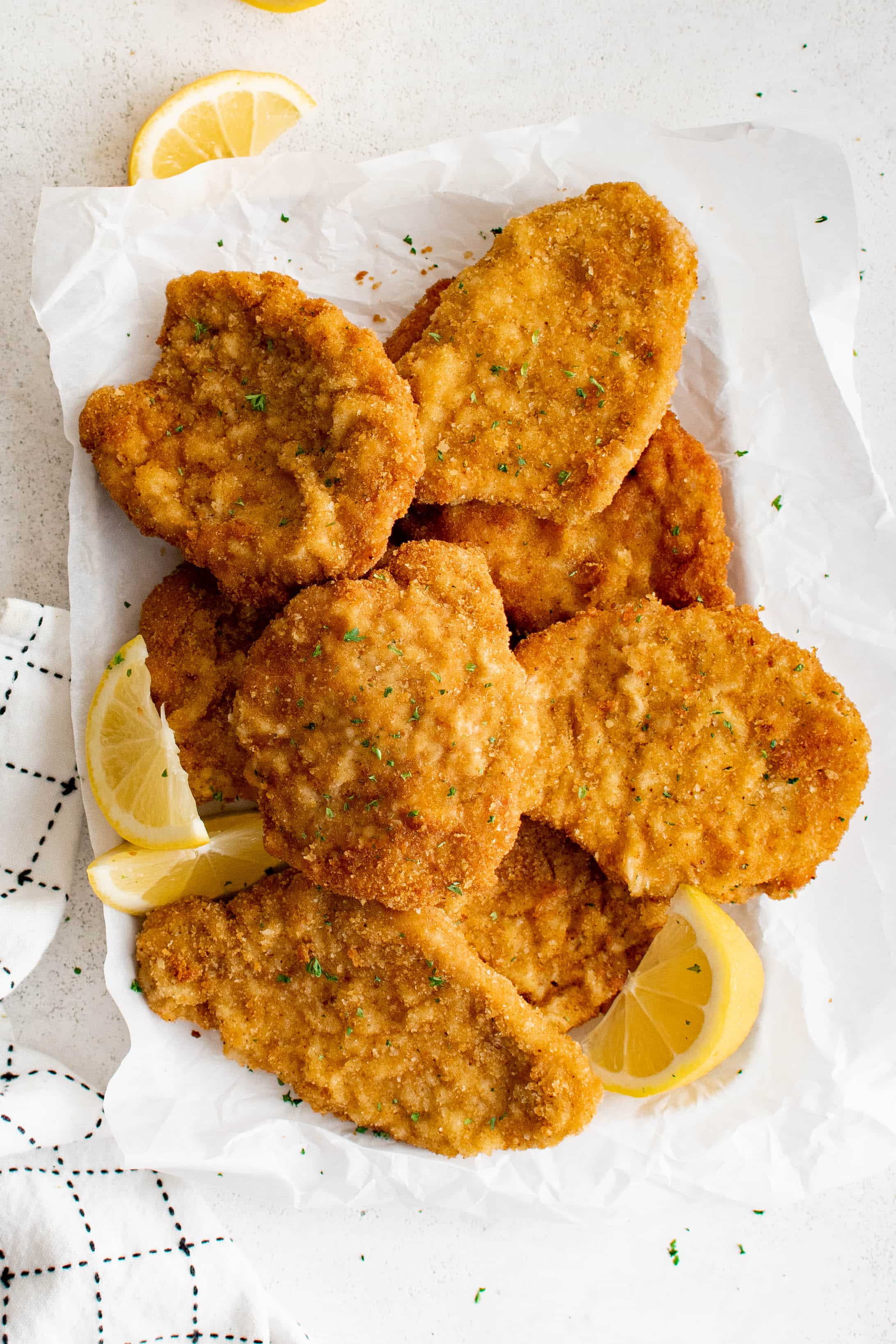
Frequently Asked Questions
Yes. Let the schnitzel cool completely, then arrange in a single layer on a parchment-lined baking sheet and freeze until firm. Transfer to an airtight container or freezer bag with parchment between layers. Store for up to 2 months and reheat in the oven at 375°F (190°C) until hot and crispy. Avoid microwaving, as it softens the breading.
The best way to reheat pork schnitzel is in the oven at 350°F (175°C) for 10 to 15 minutes, or in the air fryer at 375°F (190°C) for 2 to 3 minutes. You can also reheat it on the stovetop in a lightly oiled skillet. Avoid microwaving, since it makes the breading soggy.
More Pork Chop REcipes
Note on Authenticity: While I was born and raised in California, I spent extended time living in Southern Bavaria where I developed a deep appreciation for schnitzel and German cuisine. My recipe reflects both traditional methods and my own cooking experience. I strive for accuracy, but if you notice anything that could be improved, I welcome your insights in the comments. Thank you so much! 💛

Pork Schnitzel Recipe
Ingredients
- 2 pounds boneless pork chops, thinly sliced
- 1 cup all-purpose flour
- 1 teaspoon salt, plus more to taste
- 1 teaspoon ground black pepper, plus more to taste
- ½ teaspoon garlic powder
- ½ teaspoon onion powder
- 2 large eggs
- 1 tablespoon water
- 1 cup breadcrumbs
- vegetable oil, for frying
Instructions
- Preheat a deep-frying pan with about 1 inch of oil until it reaches 350 degrees Fahrenheit.
- In the meantime, place the pork chops between two pieces of plastic wrap on a cutting board and pound them thinly with a meat mallet until each is around ¼ inch thick. (Depending on how large your cutting board is, this may need to be done in batches.)
- In a shallow dish, gently combine the flour, salt, black pepper, garlic powder, and onion powder. In a second shallow bowl, beat together the eggs with the water. In a third dish, add the breadcrumbs.
- One at a time, dredge each pork cutlet in the flour mixture, shaking off any excess flour. Dip the pork into the egg mixture, allowing any excess egg to drip off, and finally, coating with breadcrumbs, making sure that it is covered evenly.
- When the oil is hot, place 2-3 chops into the pan and cook for 4-5 minutes or until golden brown and the internal temperature registers 145 degrees F as measured by a digital meat thermometer, flipping halfway through.
- Drain on a paper towel-lined plate, repeating the cooking process with the remaining chops.
- Serve garnished with fresh chopped parsley and lemon slices, if desired.
Notes
- Keep leftovers stored in an airtight container in the refrigerator for up to 3 days.
- Nutritional information does not include the oil that is used for frying.
Nutrition
Nutrition information is automatically calculated, so should only be used as an approximation.


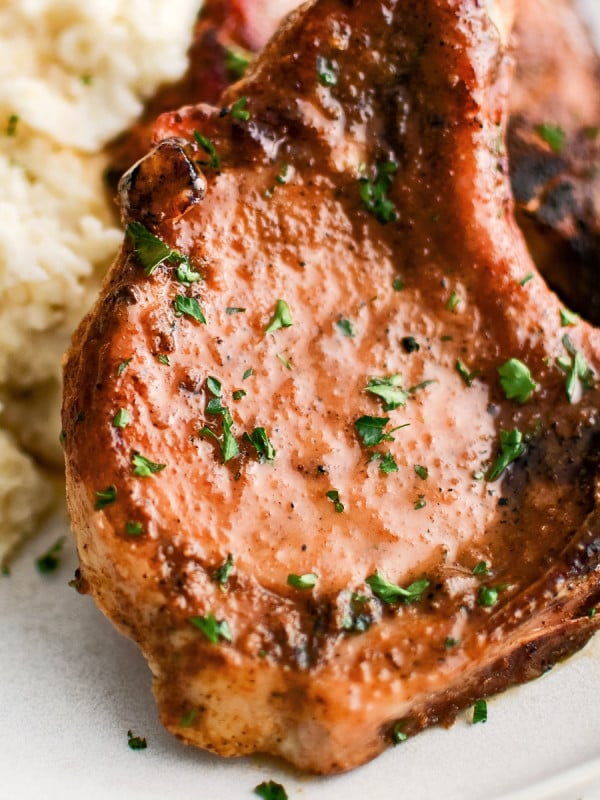


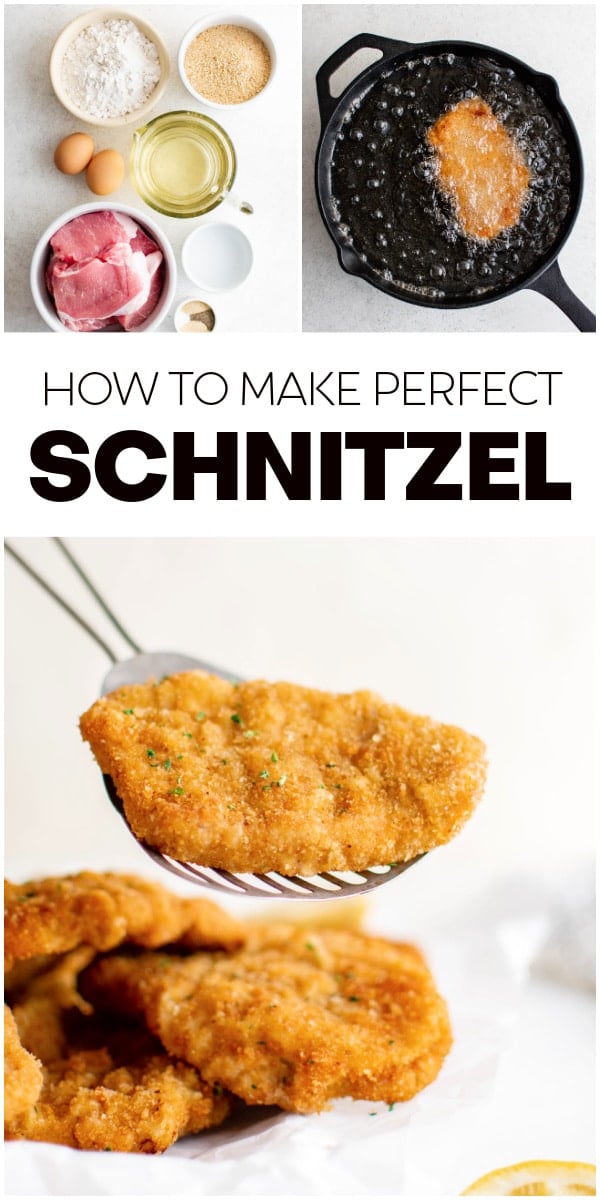
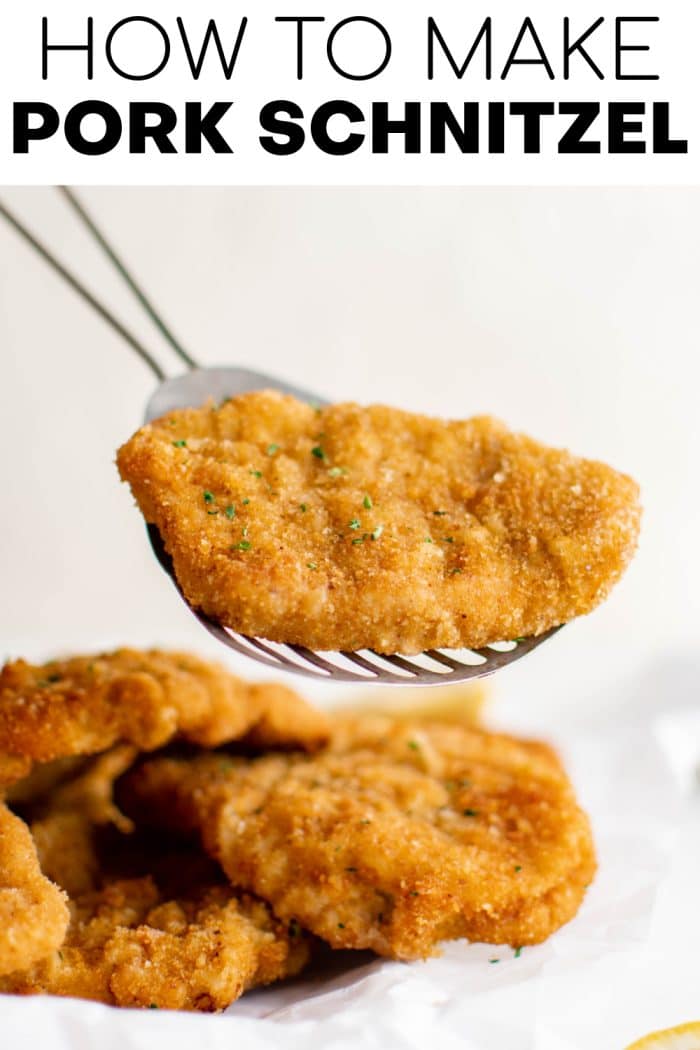

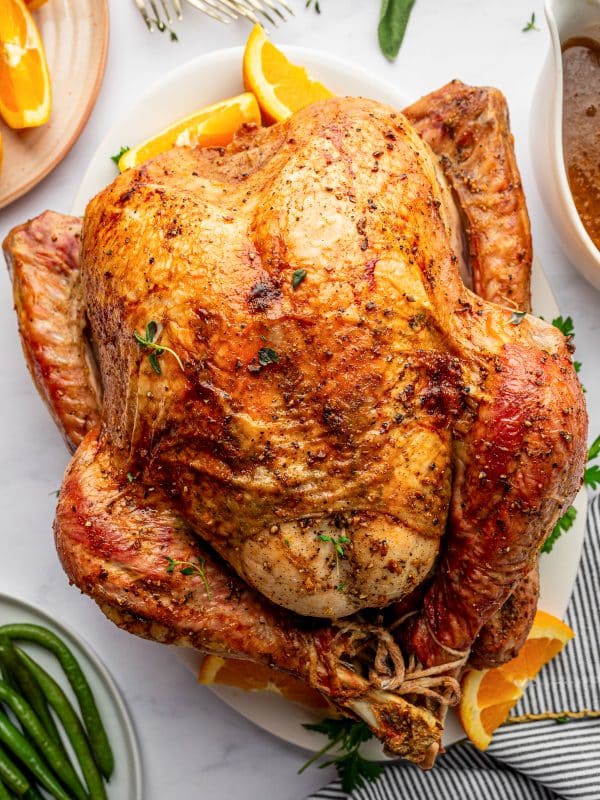
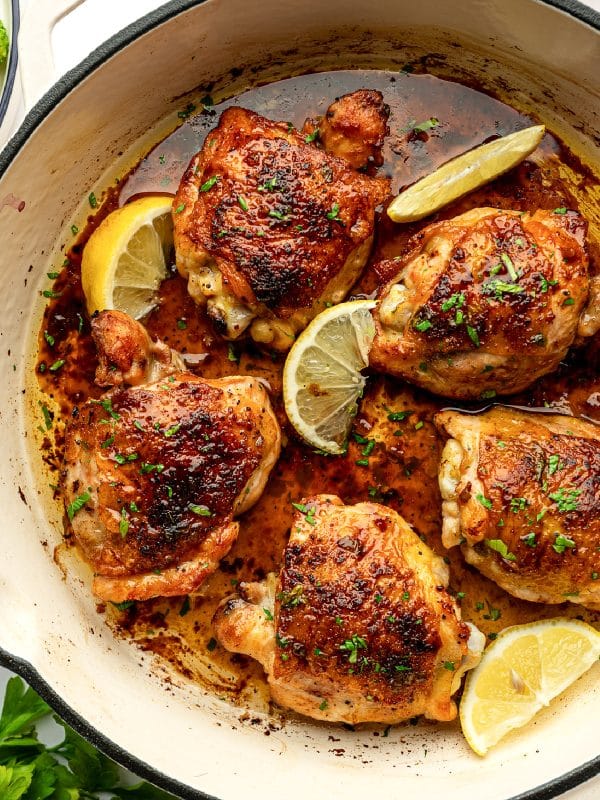
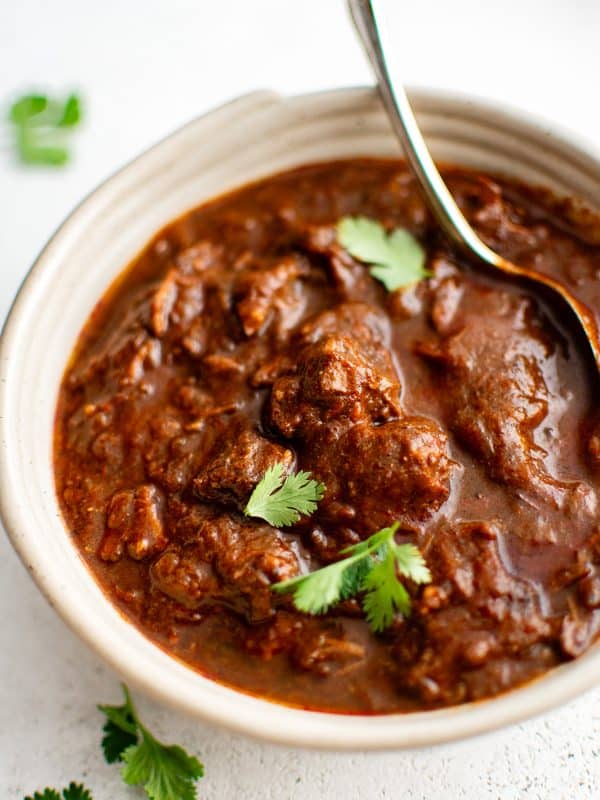
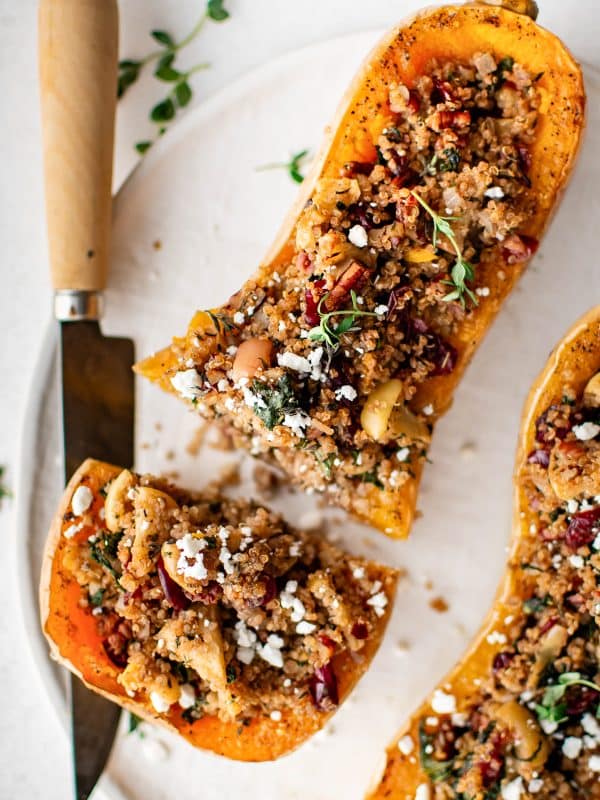








This is a lovely recipe, similar to most schnitzel recipes. Although most prominently attributed to German cuisine, most south Eastern European cultures are equally renowned for some type of schnitzel. My background is Croation and Polish, and after more than 40 years of cooking for large groups, I do mine a wee bit differently. Before flattening, I brine the pork, and like my Mom and Grandma I use a batter in lieu of the egg, flour and breadcrumbs. I married an American with roots back to the war of 1812 and before. His wonderful Grandma introduced me to the “Pork Tenderloin”, which is essentially a large pork schnitzel, made from pork loin slices, tenderized, flattened, breaded or battered, deep fried and served on a cloud soft bun with dill pickles. I make those too, but again, just a wee bit differently, instead of dill pickles, I serve my tenderloin sandwiches with coleslaw made with mayo and NO sugar. Regardless of your recipe, or how you enjoy them, pork schnitzel is a wonderful eel with a varied and colorful history.
Thank you for sharing your love for schnitzel. I also feel the same way schnitzel after spending lots of time in Europe 🙂